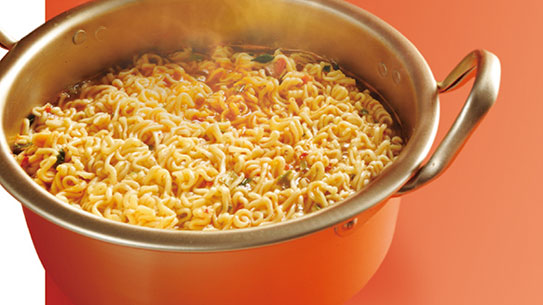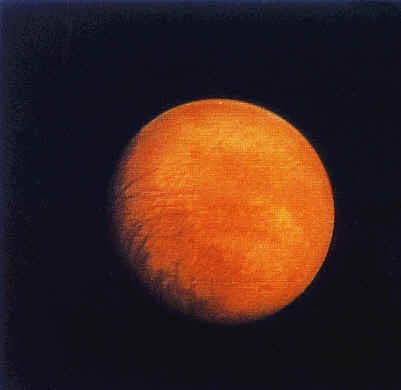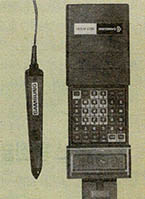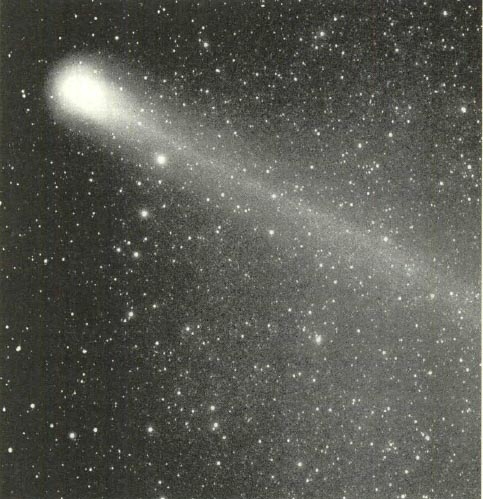
지난해 3월말 전국은 밤하늘에 나타난 햐쿠타케 혜성을 관찰하려는 열기로 들끓었다. 각 일간지에서는 혜성관측이 가능한 날짜와 기상상태, 관측방법 등을 집중 보도하기도 했다. 이 가운데 가장 관심을 끈 것은 이 혜성을 최초로 발견한 일본의 아마추어 천문가였다. 덕분에 그는 역사에 남을 혜성에 자신의 이름을 붙이는 영광을 얻었다. 그의 이름은 천문학사에 영원히 남을 것이다.
햐쿠타케 혜성의 예처럼 천문학사를 보면 최초 발견자의 이름을 따서 부르는 천체들이 매우 많다. 누가 이 많은 천체들의 이름을 짓는가? 명명된 이름들을 관리하는 단체는 누구인가? 이번호에서는 천체들의 이름을 짓고, 이들을 관리하는 기구인 국제천문연맹(IAU : http://www.lsw.uni-heidelberg.de/iau.html)이 제공하는 행성 명명법에 대해 살펴보기로 하자. 다음의 문서는 미국 지질측량국의 자료실(http://wwwflag.wr.usgs.gov/USGSFlag/Space/nomen/nomen.html)에서 발췌한 것이다. 이 문서자료에는 행성 명명의 역사, 명명의 규칙과 관례, 세부적인 설명, 태양계 행성들과 위성들의 이름, 특징, 각종 자료, 이름이 붙여진 이유 등 행성 명명에 대한 모든 정보가 담겨 있다.
IAU(국제천문연맹 : International Astro-nomical Union)는 1919년 브뤼셀에서 열린 조직회의 이후 행성과 위성의 명명을 담당해왔다. 이 위원회에게 할당된 업무는 혼란스럽게 통용되던 당시의 달과 화성 이름을 정리해 체계를 잡는 것이었다. IAU는 비엔나에서 열린 유엔총회의 한 모임인 국제학회 연합회의에 의해 1907년 설립됐다. 그러나 이 위원회는 위원들의 계속된 사망으로 보고서 하나 출간하지 못했다. 하지만 위원 중 하나인 메리 블래그가 충분한 분량의 사전작업을 해놓은 상태였다.
IAU는 터너를 의장으로 하는 명명위원회에 블래그와 몇몇 천문학자들을 배속시켰다. 이 위원회의 보고서로는 블래그와 뮬러가 작성한 달의 명칭에 관한 첫번째 체계적 목록인 ‘Named Lunar Formations’(1935)와, 후에 아서와 제라드 쿠이퍼의 지도하에 있던 다른 연구자들이 출간한 ‘The System of Lunar Craters, quadrants I, II, III, IV’(1963, 64, 65, 66)가 있다.
이들 일련의 목록은 당시 통용중인 지형 이름들(또는 다른 명칭들)과 좌표들을 열거했고, 많은 달 관련 이름들을 추가했다. 이러한 성과들은 IAU에 의해 채택돼 달의 명칭과 관련된 인증자료가 됐다.
화성의 명칭들은 1958년에 정리됐는데, 이 때는 오도인 돌푸스가 의장으로 있던 특별위원회가 지상망원경으로 관찰한 1백28개 *알베도 모양의 이름들을 채택하도록 추천한 때이기도 하다. 이들 이름들은 이탈리아 천문학자인 쉬와패렐리가 19세기 말엽 개발하고, 프랑스에서 활동한 이탈리아 태생 천문학자 안토니아디(1929)가 20세기 초 확장시킨 명명체계에 따르고 있다.
외계 명명에 필요한 요건들은 1957년에 극적으로 변했다. 당시는 스푸트니크호의 우주비행 성공과 1960년대까지 이어진 인간을 달에 보내려는 미국의 결단으로 우주탐험 시대가 시작된 때이기도 하다. 정교해진 사진들로 인해 외계행성의 표면들을 서로 구별할 수 있게 되고, 표면에 나타난 지명들의 이름을 부여할 당연한 필요가 생겼다. 그래서 IAU는 행성 명명체계를 확장하고 감독할 임무를 체계적이고도 공평하게 수행하기 위해서 이 일을 다시 떠맡았다.
1970년대에는 1960년대에 있었던 마리너호의 화성 근접통과와 화성궤도위성 마리너 9호의 발사를 앞두고 제라드 바쿨러를 의장으로 하는 화성 명명 운영위원회가 구성됐다. 이 위원회에는 우주선에서 새로 찍은 사진들에 나타난 지형적 특징들을 고려해 이름을 고안하라는 요구사항이 전달됐다.
거의 같은 시기 도날드 멘젤은 소련의 존트와 미국의 달 궤도위성, 아폴로 카메라가 식별해낸 달의 지형적 특징에 알맞는 이름을 제안하는 특별위원회의 의장으로 선출됐다.
1973년 오스트레일리아 시드니에서 열린 IAU회의에서 명명그룹들이 확대 재정비됐다. 태양계 명명 위원회(WGPSN)의 초대의장에는 캐나다의 피터 밀맨이 선출됐고, 새로 발견된 행성과 위성의 지형적 특성을 고려한 이름을 고르고 제안하는 등의 사전작업을 수행할 각 행성(달, 수성, 금성, 화성, 태양계 외부)별 특별위원회를 구성했다.
1982년 그리스의 패트라 회의에서 미국의 해롤드 매서스키가 WGPSN의 새 의장으로 선출됐다. 1991년에는 노르웨이의 카레 액스네스가 그 역할을 이어받았다. 1984년에는 소행성과 혜성같은 작은 천체들의 이름을 짓기 위한 새로운 특별위원회가 구성됐다.

IAU의 규칙과 관례
IAU는 수년간 만들어온 여러개의 규칙과 관례에 따라 이름을 채택한다. WGPSN의 첫번째 회의에서 다음과 같은 규칙들이 채택됐다. 문구들은 1977년 IAU에서 다듬어지고 간결해졌다.
1. 명명은 하나의 수단이므로 간결하고, 명확해서 모호하지 않아야 한다는 것을 우선 고려해야 한다. 이에 따라 WGPSN은 읽거나 쓰기 쉬우며, 세 음절을 넘지 않는 한 단어의 이름을 사용하기로 했다. 사람이나 신화에 나오는 인물의 경우에는 두 단어 이름까지 예외로 한다.
2. 각 대상을 지칭하는 이름의 개수는 최소한으로 유지해야 하며, 그것들의 배치는 과학위원회의 요구에 따른다.
3. 두 개 이상의 대상에 대해 똑같은 두 개의 이름을 사용하지 않는다.
4. 각 대상을 지칭하는 개개의 이름들은 원어를 사용해 표시해야 한다. 다양한 글자들로 음역되고 발음될 수는 있지만, 다른 언어로 번역해서는 안된다. 대부분의 행성도는 미국에서 발행되지만, 다른 국가에서 출간된 지도들은 그 국가의 언어를 사용한다. 키릴 문자를 사용하는 러시아에서 출간된 지도의 경우 라틴어나 그리스어로 된 용어들은 번역되지만, 이름들의 경우에는 음역된다.
5. 지형을 기술하는 용어가 라틴어나 그리스어의 형태로 쓰여진 초기의 달 명명에서 사용된 관례는 계속 사용할 수 있다. 이 규칙은 새로 식별할 수 있게 된 위성이나 행성의 지형이름을 붙이는 테마 결정 과정에서 IAU에 의해 실시된 것이다.
이런 까닭에 새로 발견된 천왕성의 위성과 지형의 이름은 셰익스피어와 포프의 작품에 나오는 인물들의 이름을 따서 윌리엄 라셀이 사용한 처음 4개의 위성들의 이름들을 따라 붙여지게 됐다. 해왕성의 위성 이름은 해왕성과 처음 2개의 위성이 사용한 ‘물’과 관련된 이름들을 사용하기로 했다.
6. 태양계 명명에는 국제적인 이름을 사용해야 한다. IAU의 국가별 위원회에 제출된 추천안들을 참작하기는 하지만, 모든 선택에 대한 최종 승인은 IAU의 책임이다. WGPSN은 각각의 지도에 대해서 여러 민족과 국가들을 공평하게 대표할 수 있는 이름을 강력하게 지지한다.
7. 태양계 명명에 관한 일반적인 논의에 있어 미래를 내다봐야 하고, 우주개발이 진행됨에 따라 향후 요구되는 각종 조건들에 기초를 놓는 시도가 되도록 해야 한다.
1976년에는 다음과 같은 규칙들이 첨가됐다.
8. 정치적, 군사적, 종교적인 의미의 용어나 현대 철학자들의 이름을 사용해서는 안된다. 19세기 이전 정치가의 이름은 가능하다.
9. 존경받는 인물의 이름을 사용할 때는 3년 이상 전에 사망한 사람이어야 한다. 우주개척에 기여한 생존 우주비행사들의 경우에는 예외로 한다.
10. 사람들이 선호한다면 현존하는 한 단어 이상의 이름을 그대로 사용한다.
11. 이름에 발음 구별 부호가 필요하다면 사용할 수 있다.
12. 새로 발견된 소위성의 고리와 고리간격의 이름은 위원회 20(소행성과 혜성의 명명을 담당)과 운영위원회의 공동심의를 거쳐 만든다. 새로 발견된 위성의 궤도 성분이 충분히 알려져 있고, 다른 것들과 구별되는 명확한 특징들을 가지고 있을 때까지 이들에게는 이름을 붙이지 않는다. 소행성과 위성 이름간의 중복이 최소화되도록 해야 한다.
이와 같은 일반 규칙들에 덧붙여 각각의 특별위원회는 개개의 행성이 흥미 있고, 의미도 담긴 이름을 가질수 있도록 부가적인 관례들을 만들어 놓았다. 이들 관례의 대부분은 앞으로 나올 부록을 자세히 살펴보면 쉽게 알 수 있다.
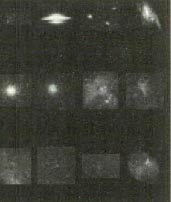
The IAU has been the arbiter of plane-tary and satellite nomenclature since its organizational meeting in 1919 in Brussels. At that time a committee was appointed to regularize the chaotic lunar and Martian nomenclatures then current. The IAU committee was an outgrowth of an earlier committee established in 1907 by the Council of the International Association of Academies, meeting in General Assembly in Vienna. This committee had been charged with the task of clarifying the lunar nomenclature but had not published a report, due to a succession of deaths of members. However, a great deal of preliminary work had been done by one member, Mary Blagg.
The IAU appointed Miss Blagg and several other astronomers to the newly commissioned nomenclature committee, chaired by H.H.Turner (IAU, 1922). The report of this committee, “Named Lunar Formations” by Blagg and Muller (1935), was the first systematic listing of lunar nomenclature. Later, “The System of Lunar Craters, quadrants I, II, III, IV” was published by D.W.G. Arthur and others (1963, 1964, 1965, 1966), under the direction of Gerard P. Kuiper. These catalogues listed the names (or other designations) and coordinates of features in the current, greatly expanded lunar nomenclature. These works were adopted by the IAU and became the recognized sources for lunar nomenclature.
The Martian nomenclature was clarified in 1958, when an ad hoc committee of the IAU chaired by Audouin Dollfus recommended for adoption the names of 128 *albedo features (bright, dark, or colored) observed through ground-based telescopes (IAU, 1960). These names were based on a system of nomenclature developed in the late 19th century by the Italian astronomer G.V. Schiaparelli (1879) and expanded in the early 20th century by E. M. Antoniadi (1929), an Italian-born astronomer working at Meudon, France.
The requirements for extraterrestrial nomen-clature were dramatically changed in 1957 when the age of space exploration was inaugurated by the successful flight of Sputnik and by America’s consequent determination to land a man on the Moon in the 1960’s. As detailed images became available of one newly discriminated extraterrestrial surface after another, the need to name features on these surfaces became evident. Once again the IAU assumed the task of expanding and overseeing planetary nomenclature so that the effort would proceed in an orderly, fair, and evenhanded way.
In 1970, in response to the successful Mariner flyby missions to Mars during the 1960’s, and in anticipation of the Mariner 9 Mars Orbiter, a Mars nomenclature working group was formed, chaired by Gerard de Vaucouleurs; this group was asked to designate names for the topographic features shown in the new spacecraft images (de Vaucouleurs and others, 1975). At about the same time, Donald H. Menzel chaired an ad hoc lunar committee that suggested names for features discriminated by the Soviet Zond and American Lunar Orbiter and Apollo cameras (IAU, 1971).
At the 1973 meeting of the IAU in Sydney, Australia, the nomenclature groups were reorganized and expanded. The Working Group for Planetary System Nomenclature (WGPSN) was appointed with Peter Millman of Canada as its first president. Task groups for the Moon, Mercury, Venus, Mars, and the Outer Solar System were formed to conduct the preliminary work of choosing themes and proposing names for features on each newly discriminated planet and satellite. In 1982 at Patras, Greece, Harold Masursky of the U.S.A. became president of the WGPSN; he was succeeded in 1991 by Kaare Aksnes of Norway. A new task group was formed in 1984 to name surface features on small primitive bodies (asteroids and comets).
IAU RULES AND CONVENTIONS
Names adopted by the IAU must follow various rules and conventions established through the years by the Union. At the first meeting of the WGPSN, the following rules were adopted (paraphrased and condensed from IAU, 1977):
1. Nomenclature is a tool and the first consideration should be to make it simple, clear, and unambiguous. As corollaries to rule 1, the WGPSN decided that names should be easy to pronounce and spell, and that single names of no more than three syllables are preferred. Exceptions are allowed for persons or mythical characters known by double names.
2. The number of names chosen for each body should be kept to a minimum, and their placement governed by the requirements of the scientific community.
3. Duplication of the same name on two or more bodies is to be avoided.
4. Individual names chosen for each body should be expressed in the language of origin. Transliteration and pronunciation for various alphabets should be given but there will be no translation from one language to another. Most planetary maps are published in the United States; however, maps published in other countries use the language of that country. Maps published in Russian use the Cyrillic typescript; (romanized) Latin and Greek terms are translated, and names are transliterated.
5. Where possible, the practice established by early lunar nomenclature should be used, in which descriptors (feature types) are written (except in Russian usage) in their Latin or Greek form. This rule has been invoked by the IAU when establishing a theme for naming features on newly discriminated satellites or planets. Thus, newly discovered Uranian satellites and features on previously discovered satellites continued the theme established by William Lassell when he named the first four satellites for characters (mostly bright and dark spirits) from Shakespeare and Pope; names for satellites of Neptune continue the “watery” theme established by the names of the planet and first two satellites discovered.
6. Solar system nomenclature should be international in its choice of names. Recommendations submitted to the IAU national committees will be considered, but final approval of any selection is the responsibility of the International Astronomical Union. The WGPSN strongly supports equitable representation of ethnic groups/countries on each individual map.
7. We must look to the future in general discussions of solar system nomenclature and attempt to lay the groundwork for future requirements that will result from the development of the space program.
Additional rules developed since 1976 include the following:
8. No names having political, military or religious significance, or names of modern philosophers, may be used. Names of political figures prior to the 19th Century are acceptable.
9. Persons being honored must have been deceased for at least three years before his/her name can be assigned to a feature. Exceptions to this rule were made for living astronauts and *cosmonauts because their contributions to space exploration were unique.
10. When more than one spelling of a name is extant, the spelling preferred by the person is used.
11. *Diacritical marks are a necessary part of a name, and will be used.
12. Ring and ring-gap nomenclature and names for newly discovered small satellites (cf. table 2, figs. 1 and 2) are developed by joint deliberation of the Working Group and Commission 20, which is in charge of naming asteroids and comets. Names will not be assigned to newly discovered satellites until their orbital elements are reasonably well known or definite features have been identified on them. Duplications between the names of asteroids and satellites should be minimized.
In addition to these general rules, each task group develops additional conventions as it formulates an interesting and meaningful nomenclature for individual planetary bodies. Most of these conventions are self evident from study of the appendixes that follow.
홈워드 말하는 척척박사
LG소프트웨어가 유아 및 초등학생용 워드프로세서 '종이와 연필 그리고 물감'에 이어 주부와 성인층까지 함께 사용할 수 있는 홈그래픽 소프트웨어 '말하는 척척박사'를 발표했다. 윈도 95전용인 이 프로그램은 입력된 문장을 음성화해서 읽어주는 TTS(text to speech)기능을 비롯해 동화상 기능 등 최신 멀티미디어 기능을 고루 갖추고 있다.
CD롬 1장에 들어 있는 이 제품에는 실생활에 많이 쓰이는 1천2백여종의 문서예제와 2천여종의 다양한 클립아트가 함께 들어 있어 팬시제품같은 문서뿐만 아니라 스토리 저낵 능력만 받침된다면 누구나 어렵지 않게 자작 동화책을 만들 수 있다. 또한 방대한 분량의 영한, 한영, 국어 및 컴퓨터 용어사전을 내장하고 있어 교육적 활용도도 높다.







